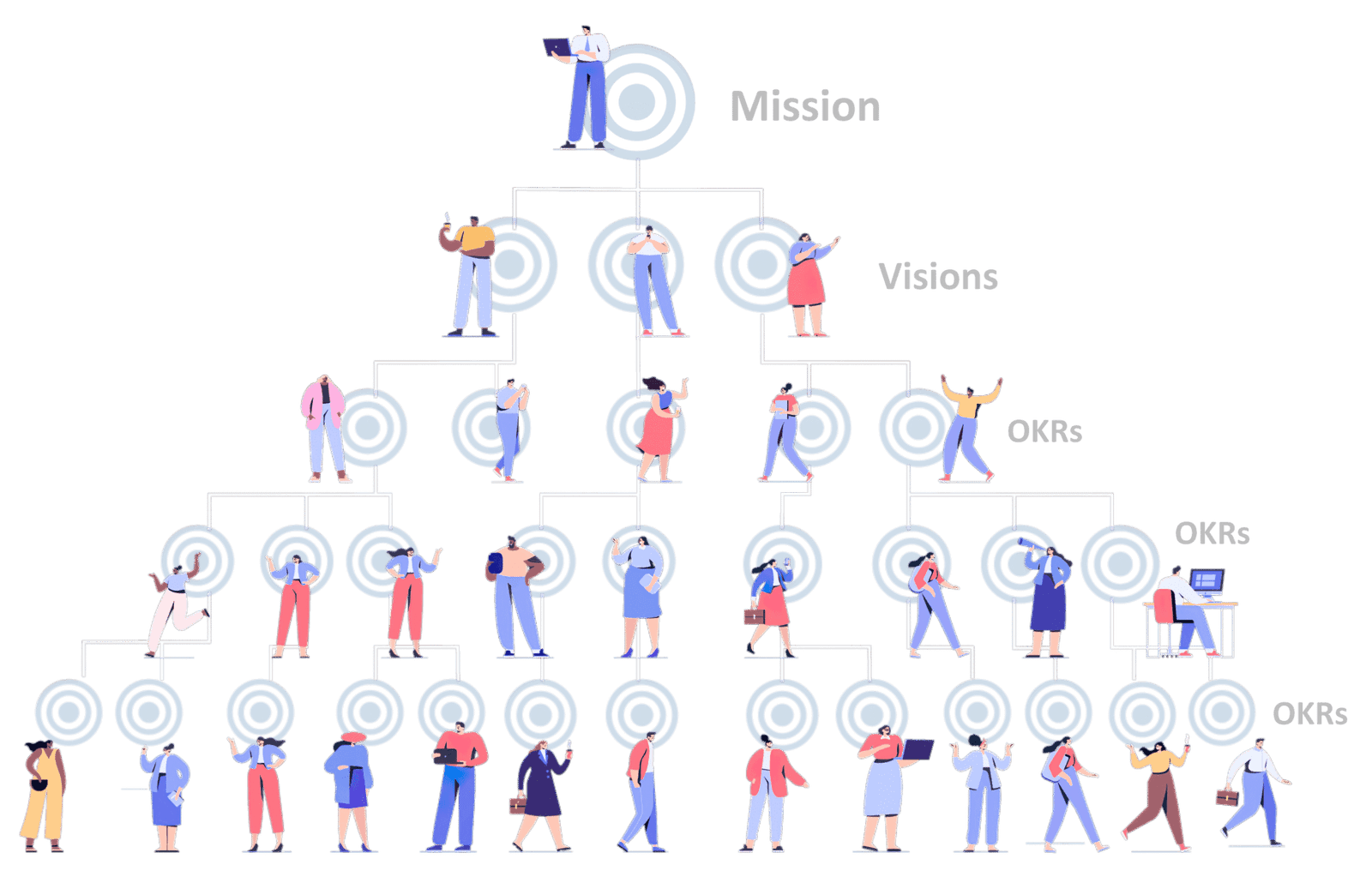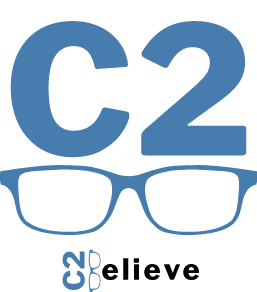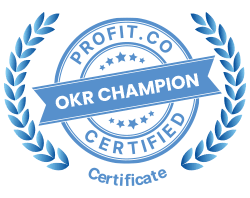🎧⠀Listen and follow
Introduction:
OKR is a flexible framework for any industry.
OKRs, Objectives and Key Results, have long been an essential tool for tech giants like Intel, Google, Apple, and Microsoft. But what about other industries? Can OKRs also be a game-changer for governments, healthcare, nonprofits, manufacturing, and service organizations?
The short answer: Absolutely. Below, we explore why OKRs are so adaptable—and how they’re being used across sectors to drive clarity, alignment, and measurable impact.
New to OKRs? see “What is OKR?”
OKR is a Bendable Framework
By “Framework” we mean that OKR is a set of guidelines, concepts and general strategies – it is not a rigid set of rules and regulations. Many OKR literatures will attest that OKRs can bend to you, not the other way. OKRs adapt to your culture, cadence and constraints.
Find out more “Hybrid OKRs: let OKRs Adapt to You“

OKRs are about the numbers.
Just as Moneyball revolutionized baseball with data-driven decisions, OKRs bring business-by-the-numbers to organizational strategy. Any industry that tracks metrics, whether performance, engagement, or outcomes, can benefit from OKRs
OKR is conceptually easy to understand and visualize.
Though there are nuances about OKRs that take some practice to get used to, OKRs still remain easy to conceptualize as a heirarchy of goals. When done right, it is beautifully aligned with strategic corporate goals and organized all the way down to the front lines. This visual simplicity makes it attractive to companies from any industry.

Simply aligned and organized.
OKRs are good for organizations that use KPIs
In Taiwan and elsewhere, KPIs are widely used to measure performance. But KPIs often lack context: they show what needs to happen, not how or why. OKRs fill that gap by aligning cross-functional collaboration, employee engagement, and strategic intent. KPIs can become the Key Results within an OKR framework.
Find out more ”OKRs vs KPIs“

KPIs fit well with OKR strategies
OKRs can scale from startups to global enterprises
Whether you’re a 5-person startup or a 10,000-person enterprise, OKRs help align goals from leadership to frontline teams. They can be deployed company-wide or at the team, department, or individual level.
Examples of OKRs different industries:
Tech & Digital Businesses: From Google to Adobe
Tech companies pioneered OKRs to scale innovation and maintain alignment across fast-moving teams. Google famously adopted OKRs from Intel, using them to drive moonshot thinking while staying execution-focused. Adobe, known for products like Photoshop and Acrobat, implemented OKRs to replace outdated annual performance reviews and foster a culture of continuous feedback and goal alignment.
What works at Adobe:
- OKRs used to replace rigid performance reviews with dynamic goal-setting
- Objectives focused on innovation, collaboration, and employee development
- Key Results tracked contribution impact and team-level progress
Manufacturing: Bosch
Bosch, the German engineering giant, partnered with the OKR Institute to enhance strategic alignment across product and scrum teams. The initiative focused on integrating OKRs into Bosch’s agile framework, particularly within R&D and product development.
What works at Bosch:
- OKR training tailored for Agile Coaches and Product Managers
- Integration of OKRs with existing agile methodologies like Scrum
- Improved OKR drafting and alignment with team-level execution
Government & Public Sector: U.S. Department of Veterans Affairs
Government agencies like the Department of Veterans Affairs have used OKRs to translate policy goals into measurable outcomes. One initiative focused on improving healthcare access for veterans, with Objectives centered on convenience and Key Results tracking proximity to care, telemedicine usage, and appointment wait times.
What works at Veterans Affairs:
- Objectives framed around public impact, such as improving access and reducing delays
- Key Results measuring proximity to care (e.g. 90% of veterans within a 45-minute drive), telemedicine adoption, and streamlined approval processes
- OKRs used to clarify what success looks like across elected, appointed, and career officials
Healthcare: Cleveland Clinic – Executive-Level OKRs for Patient & Staff Outcomes
In the United States nonprofit sector, Cleveland Clinic publicly publishes its CEO-level OKRs annually, aligning clinical excellence with staff engagement and digital transformation. These OKRs are aspirational yet measurable, covering both patient safety and workplace culture.
What works at the Cleveland Clinic:
- Objectives focused on public impact, including safety, care continuity, and staff well-being
- Key Results tied to measurable clinical and cultural metrics, such as safety event rates and leadership diversity
- OKRs used to align executives, clinicians, and staff around shared outcomes—published transparently to reinforce accountability
Nonprofits: Code for America
Impact-driven organizations like Code for America use OKRs to align civic tech projects with measurable outcomes—like improving access to public services and increasing community engagement.
What works at Code for America:
- Objectives aligned with mission and community impact
- Lightweight OKR cycles that match campaign or funding timelines
- Key Results focused on reach, retention, and stakeholder engagement
Conclusion: OKRs are for everyone.
Across industries, OKRs are proving to be a flexible, scalable framework for strategic execution. Whether you’re managing a factory floor, a policy rollout, or a digital product launch, we all have goals that can be tracked by the numbers. And it’s OKR that can be adapted to fit your culture, your constraints, and your goals. The key is, if you bend the framework to serve your strategy, anyone can take advantage of the powerful features behind OKRs, and that’s why OKR is a flexible framework for any industry.

OKR is a flexible framework for any industry.
OKR Training Classes in Taiwan
C2believe provides OKR training with classtime, exercises, and coaching.
On Site or Off Site | English or Chinese | In Taiwan (or remote)
- Introduction to OKR for leadership (2 hours)
- Team OKR Class (18 hours) – Classtime, exercises and coaching
- 8-month OKR deployment (coaching and train the trainers)
Contact us about your OKR training needs here
References:
- Bernhard, A. (2023). Defeating government bureaucracy with OKRs. What Matters. https://www.whatmatters.com/articles/code-for-america-okrs-local-government
- Schuldt, B. (2024, March 19). 27 companies that use OKRs and success stories. Tability. https://www.tability.io/odt/articles/companies-that-use-okrs-and-success-stories
- Bosch Power Tools Emerging Markets. (2023). Case study: Becoming a high-performing organization with OKRs. Workpath. https://4157536.fs1.hubspotusercontent-na1.net/hubfs/4157536/%5BEN%5D%20Bosch%20PT%20BE%20Case%20Study.pdf
- Panchadsaram, R. (2023). Making government work better with OKRs. What Matters. https://www.whatmatters.com/articles/government-policy-okrs
- Gothelf, J. (2023, June). OKR case study: The Cleveland Clinic. Jeff Gothelf. https://jeffgothelf.com/blog/okr-case-study-the-cleveland-clinic









0 Comments